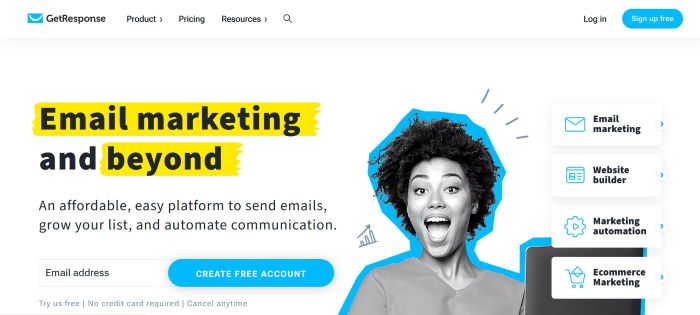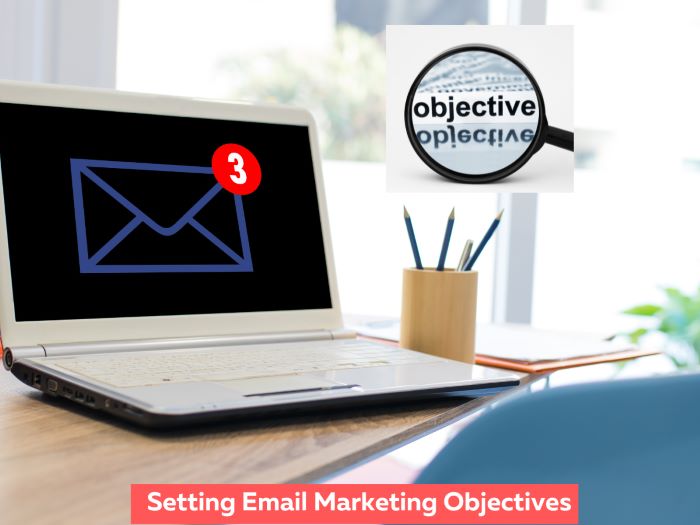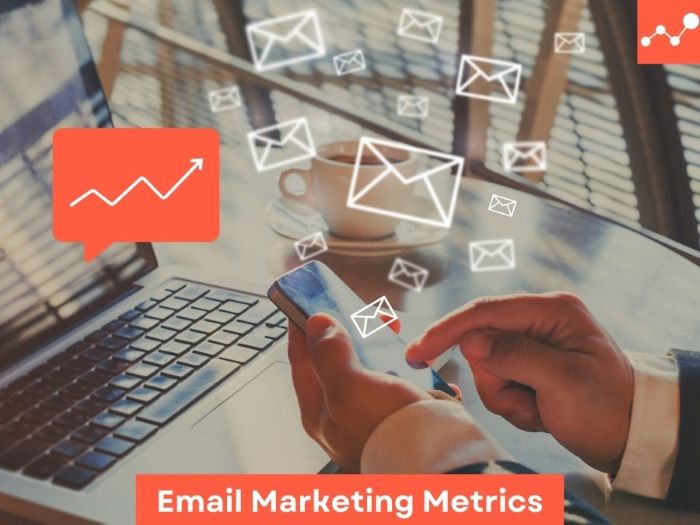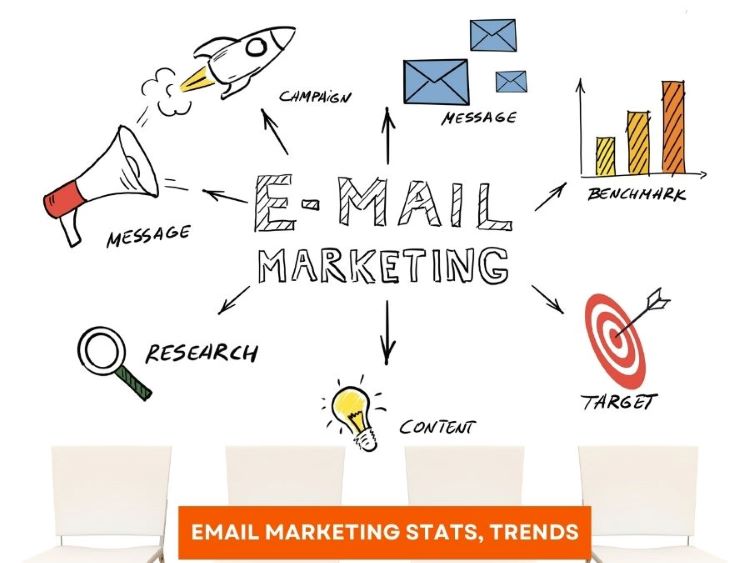The Do’s and Dont’s of Email Marketing for Lead Generation
Email marketing is a powerful company lead generation technique. This lengthy guide covers email marketing basics for lead generation. Our detailed tutorial covers email marketing essentials.
We will discuss building and maintaining a high-quality email list, creating engaging and personalized content, using A/B testing, automating lead nurturing, and following email marketing regulations.
Addressing these essential factors will provide you the knowledge and abilities to succeed in email marketing. Additionally, email marketing problems must be addressed.
These include spamming, overmailing subscribers, not optimizing for mobile devices, ignoring analytics and data analysis, and not acknowledging unsubscribes and criticism.
To demonstrate crucial points, this article analyzes email marketing for lead generation using real-world examples.
You will learn how to use email marketing in their campaigns by studying practical tips and methods. Let’s start with email marketing’s nuances that will improve your techniques.
Introduction
Email marketing is essential for lead generation since it builds and nurtures a valuable customer list. A business looking to grow its customer base must grasp email marketing best practices and dangers to connect with and fascinate its target audience.
This post will teach you the best email marketing lead generating strategies and potential pitfalls. By learning this, you can optimize your campaigns and ensure their success.
II. The “Dos” of Email Marketing for Lead Generation
II.A Building and Managing a Quality Email List
This chapter covers the essentials of developing and managing an email list. Any business or group can benefit from a well-curated email list for focused and personalized communication. This chapter’s best practices will help you
A high-quality email list is essential for email marketing success. A good email list includes people who have freely subscribed and shown genuine interest in your products or services.
Multiple tactics are needed to build and maintain a high-quality email list. These include providing excellent material to encourage email address sharing, segmenting your list by demographic or preference, and removing inactive or irrelevant subscribers to maintain list sanitation. By focusing email list quality, you can optimize message targeting and increase lead generation.
A free style guide or exclusive fashion suggestions can encourage buyers to submit their email addresses with a clothes company. By providing helpful content in exchange for contact information, retailers can engage customers and develop mutually beneficial relationships.
The company’s high-quality material may attract product enthusiasts. This increases the probability of converting them into loyal consumers. Retailers can segment email subscribers by age, gender, and buying preferences by segmenting the list regularly.
This strategy allows the shop to personalize promotional messages to each demographic, enhancing their chances of success. Additionally, list maintenance should include proactively eliminating subscribers who have not engaged with emails.
Infoshare Academy used Facebook to collect leads for email marketing. They prepared an ebook “The 125 coding terms for beginners” as a lead magnet.
They reached their audience by educating them. Their target audience were mainly those who were starting to learn to code. You can read the case study here.
II.B Crafting Engaging and Personalized Content
Effective communication requires interesting and tailored content. Consider your audience’s requirements and interests when developing content. Customizing your content to their tastes keeps them interested. Creating compelling content requires
Engaging and tailored content is essential for email marketing success. To engage your audience, tailor email messaging to their needs and tastes.
Subscriber communication can be personalized using several methods. Addressing subscribers by name gives a sense of personalization.
Personalization is enhanced by adding dynamic content based on past interactions. Another method is delivering tailored emails based on subscribers’ behavior or purchase history to ensure relevant and compelling content.
You can engage your audience and increase the possibility of converting them into valuable leads by deliberately developing content targeted to their tastes and needs.
Personalized email marketing helps clothes retailers communicate with subscribers. Addressing recipients by name and personalizing product recommendations to their preferences based on past purchases or browsing history helps achieve this.
They can also use dynamic content to display subscriber-specific styles and promotions. A more personalized email can increase the likelihood of the recipient actively engaging with the material and making a purchase.
II.C Implementing A/B Testing for Optimization
A/B testing for optimization requires numerous phases. A/B testing, sometimes called split testing, compares two versions of a webpage or app to see which has higher user engagement and conversion rates. By
Email marketing requires and benefits from A/B testing. It lets marketers evaluate and optimize email elements to boost open and click-through rates.
Experiments and analysis of subject lines, email copy, call-to-action buttons, and email scheduling can reveal the best audience engagement methods.
A data-driven approach lets you create content that will engage and convert leads in your email campaigns.
Imagine you’re an e-commerce company doing an email marketing campaign to sell a new product. Comparing email versions with A/B testing is useful. You can create two emails with distinct subject lines.
One version can stress product features, while the other emphasizes a limited-time offer. By reviewing the A/B test results, you may learn which subject line strategy your audience prefers and optimize your email marketing.
A thorough analysis of both versions’ open and click-through rates can reveal which method is most effective at grabbing the audience’s attention and getting them to buy. You can improve and maximize future results.
II.D Automating and Nurturing Leads
To optimize lead creation, we shall examine automating and nurturing leads. Lead nurturing automation uses technology and tools to streamline and automate
Automation helps businesses send relevant and timely material to leads along the customer journey, making it essential to lead nurturing. Businesses may successfully move prospects through the sales funnel with automated email sequences.
These sequences inform prospects, solve their pain spots, and discreetly persuade them to buy. User activities or behaviors often trigger automated emails. Subscribing to a newsletter, downloading a resource, or abandoning a shopping cart are examples.
Implementing an automated lead nurturing process allows you to build stronger relationships with leads, increasing the possibility of turning them into loyal clients.
II.E Complying with Email Marketing Regulations
Businesses can use email marketing legally and effectively by following these rules. This section discusses the main email marketing restrictions that organizations must follow.
Follow email marketing laws like the CAN-SPAM Act and GDPR while using email marketing for lead generation. The above legislation aim to protect consumers and regulate email marketing.
Obtaining clear authorization from subscribers before sending emails is essential for regulatory compliance. Additionally, a visible unsubscribe button, precise sender identification, and timely processing of unsubscribe or opt-out requests are essential.
By following email marketing do’s, you build trust and credibility with your audience and maintain a good reputation.
III. The “Don’ts” of Email Marketing for Lead Generation
III.A Avoiding Spammy Practices
Spam-like email practices can hurt your brand and email marketing. Avoid certain practices to reduce spam risk. These include using false subject lines, excessive capital letters or exclamation marks, and sending emails to purchased or rented lists. Prioritize value delivery and transparency to improve email reception.
By doing so, you can increase the possibility that your communications reach their intended recipients without being tagged as spam.
A corporation that sends users tailored and relevant emails with unique offers and useful content is one example. A company like this is likely to have a good reputation and deliver well.
However, a company that sends unsolicited emails with false subject lines and aggressive sales practices may quickly be tagged as spam by email service providers.
III.B Overloading Subscribers with Emails
This involves sending too many messages to subscribers. Organisations sending too many emails to subscribers might cause a poor user experience and disengagement.
Regularly communicating with subscribers is important, but don’t overwhelm them with emails. Doing so may reduce engagement and lead generation.
Excessive email correspondence can exhaust and annoy users, causing them to ignore or unsubscribe. To keep subscribers engaged without overwhelming them, find the right balance of email frequency.
By carefully monitoring important engagement indicators and actively soliciting audience feedback, you can expertly tweak your email frequency plan to ensure a healthy and mutually beneficial connection with your valued subscribers.
A corporation that sends subscribers emails is an example. Over time, the company may see a drop in open and click-through rates, indicating audience fatigue.
Increasing email communication to weekly or bi-weekly may increase engagement and lead generation. This is because subscribers pay greater attention and act more on emails. By actively soliciting target audience feedback and adjusting email frequency, the organization can ensure they are
III.C Neglecting Mobile Optimization
In a mobile-first world, neglecting mobile optimization in email marketing might hurt lead generation. To deliver a smooth mobile experience, you must optimize your emails for mobile devices, where most email openings occur.
Mobile optimization neglect might result in emails that are hard to read, have disturbed layouts, or have non-responsive links or buttons. Mobile-friendly email designs, responsive layouts, and brief, useful content can improve mobile user experience and lead generation.
Responsive design can improve mobile email marketing for apparel retailers. This method automatically adjusts email visuals and text to different screen widths. Call-to-action buttons suited for touchscreen engagement should also be displayed.
This will make it easy for users to navigate the website and buy quickly. The shop may optimize the mobile user experience with this technique, resulting in smooth and uninterrupted engagement that encourages active participation and increased sales conversions.
III.D Neglecting Analytics and Data Analysis
Data analysis is vital to email marketing lead generation. If you don’t monitor and assess your email campaign, you may lose opportunities to improve it and maximize your efforts.
Tracking and analyzing open rates, click-through rates, conversion rates, and unsubscribes can help you evaluate your email marketing and suggest areas for improvement. These insights enable you to make data-driven decisions, improving your lead generating strategy.
Say a given email campaign consistently has low open rates. By carefully examining the subject lines and substance of these emails, one may see a lack of personalization or compelling incentives to open them.
You can optimize your future ads by using tailored subject lines and more attractive offers with your knowledge. This strategy will increase open rates and lead engagement.
III.E Ignoring Unsubscribes and Feedback
Unsubscribes and feedback should be seen as opportunities to improve performance. Although a reduction in subscribers can be frustrating, understanding their motivations can help you improve your email marketing strategy.
Listening to feedback helps you identify and fix content, frequency, and strategy concerns. By acknowledging and resolving these issues and making the appropriate changes, you may improve email campaign performance. This strategy will enhance lead generation and subscription retention.
Conclusion
In conclusion, email marketing is crucial for lead generation. To succeed in this field, you must know the best practices and pitfalls. Email marketing requires several critical practices.
These include building and maintaining a high-quality email list, creating engaging and personalized content, using A/B testing to improve performance, automating lead nurturing, and following email marketing regulations. This domain requires these “do’s”.
Instead, avoid spamming practices like flooding subscribers with emails. Neglecting mobile optimization, analytics, data analysis, unsubscribes, and feedback are also big mistakes. By following these best practices, businesses may optimize their email marketing, cultivate prospects, and generate more high-quality leads.
Tech and Coffee. One fuels me while the other fuels my pocket. On days I am not writing I travel to offbeat destinations.






